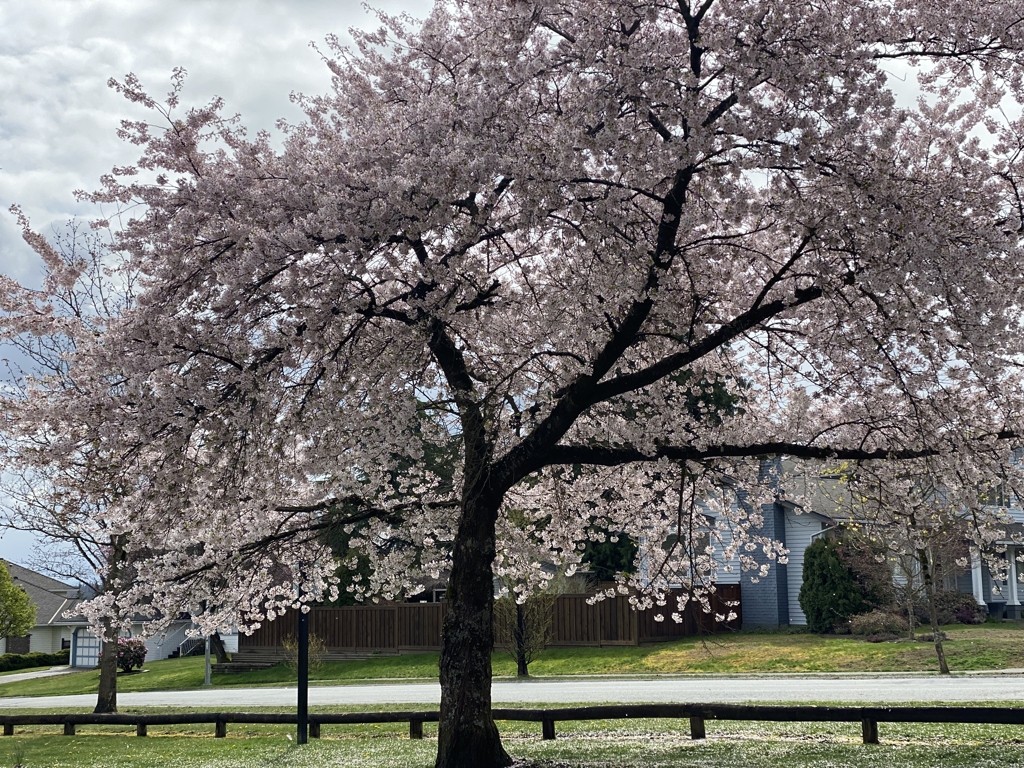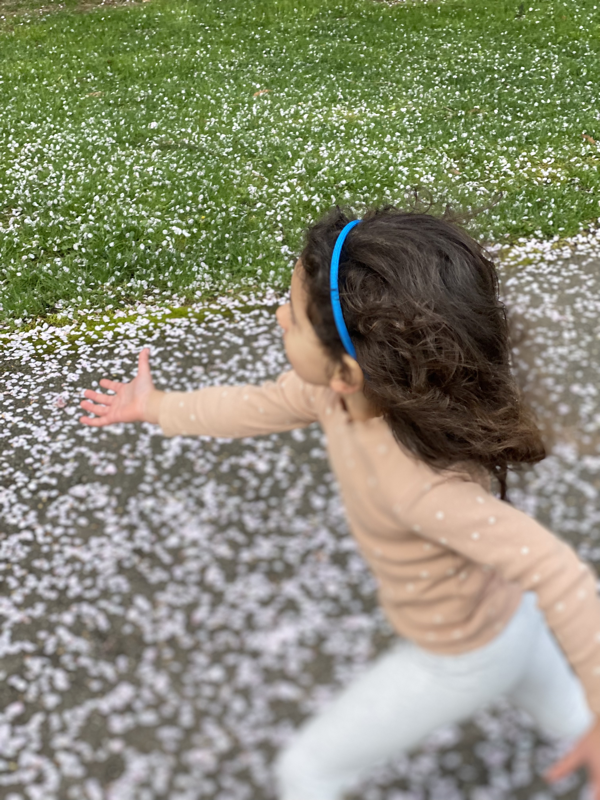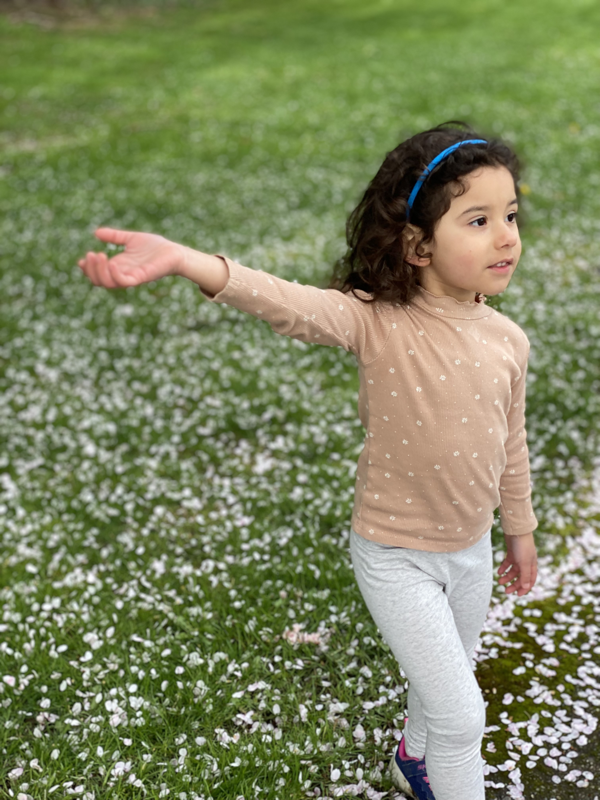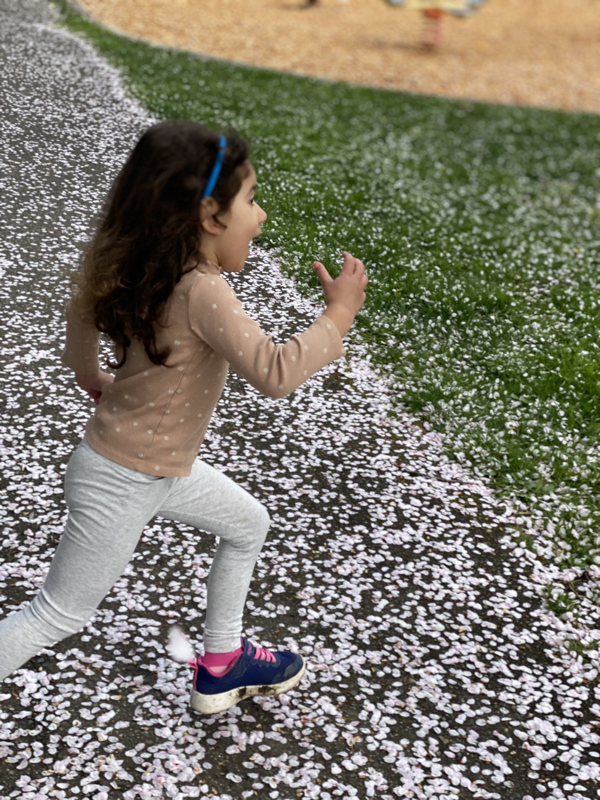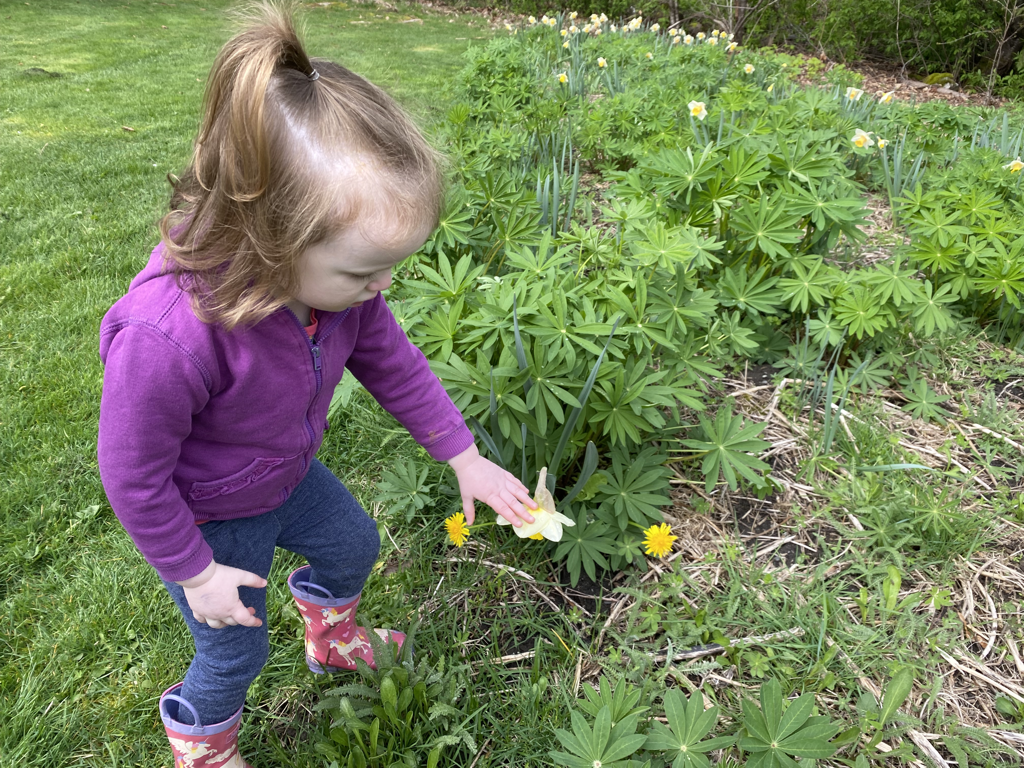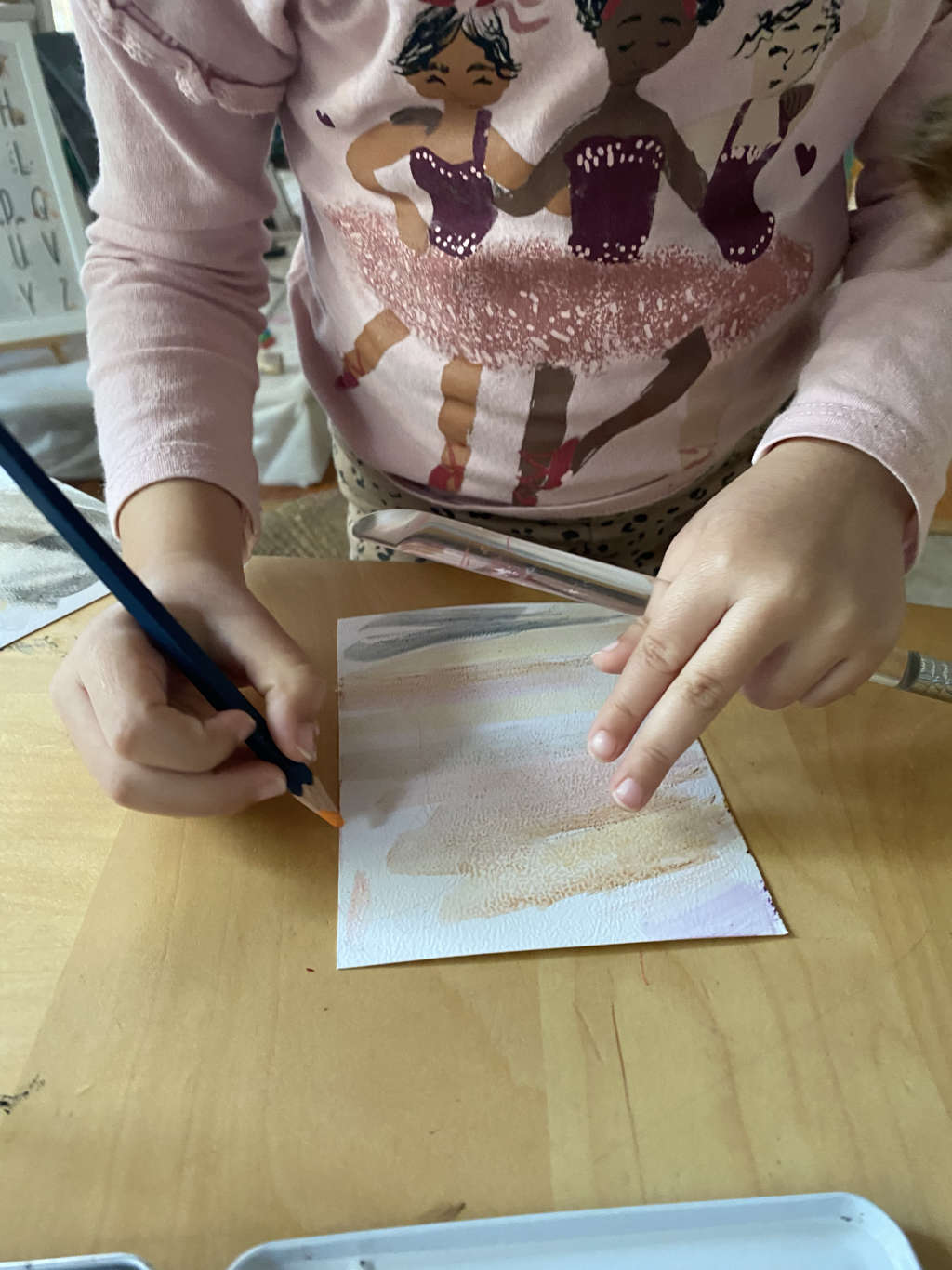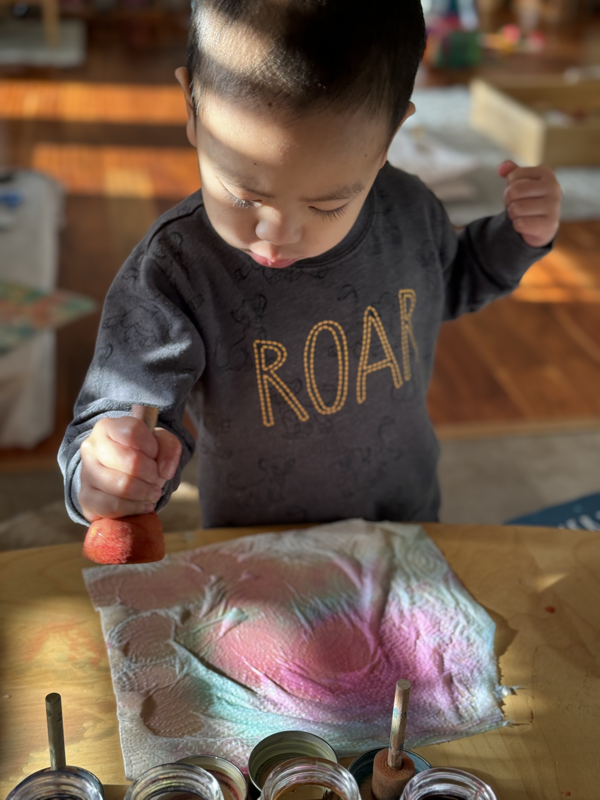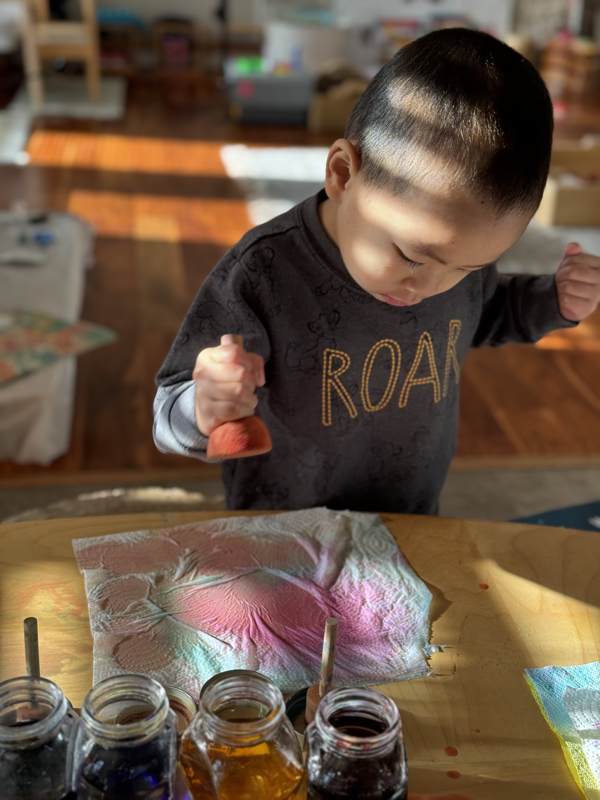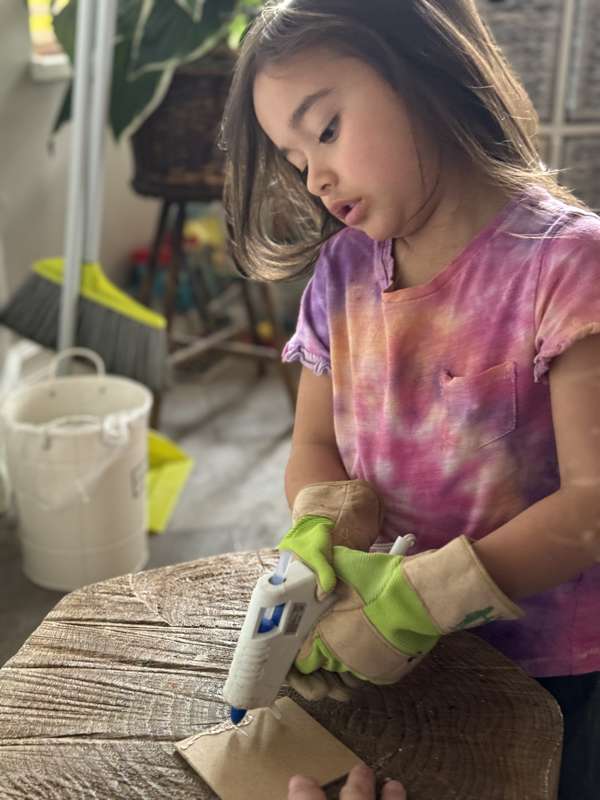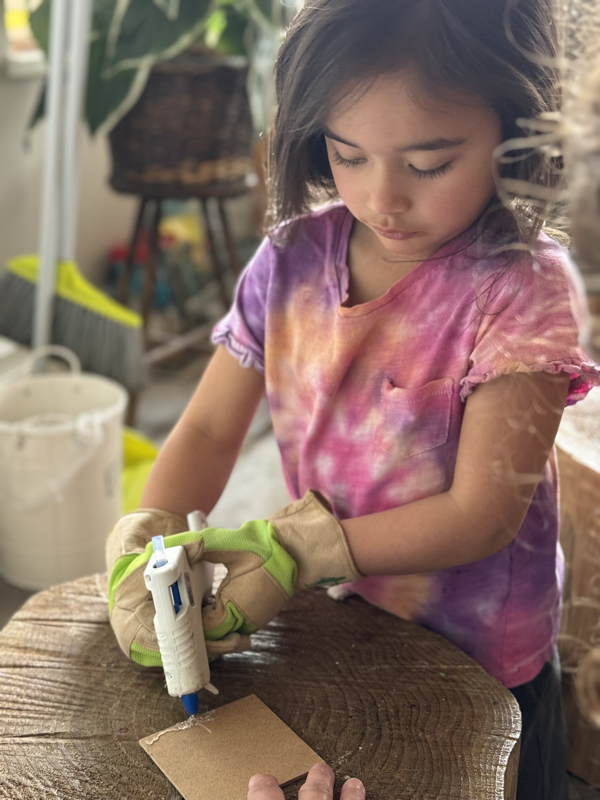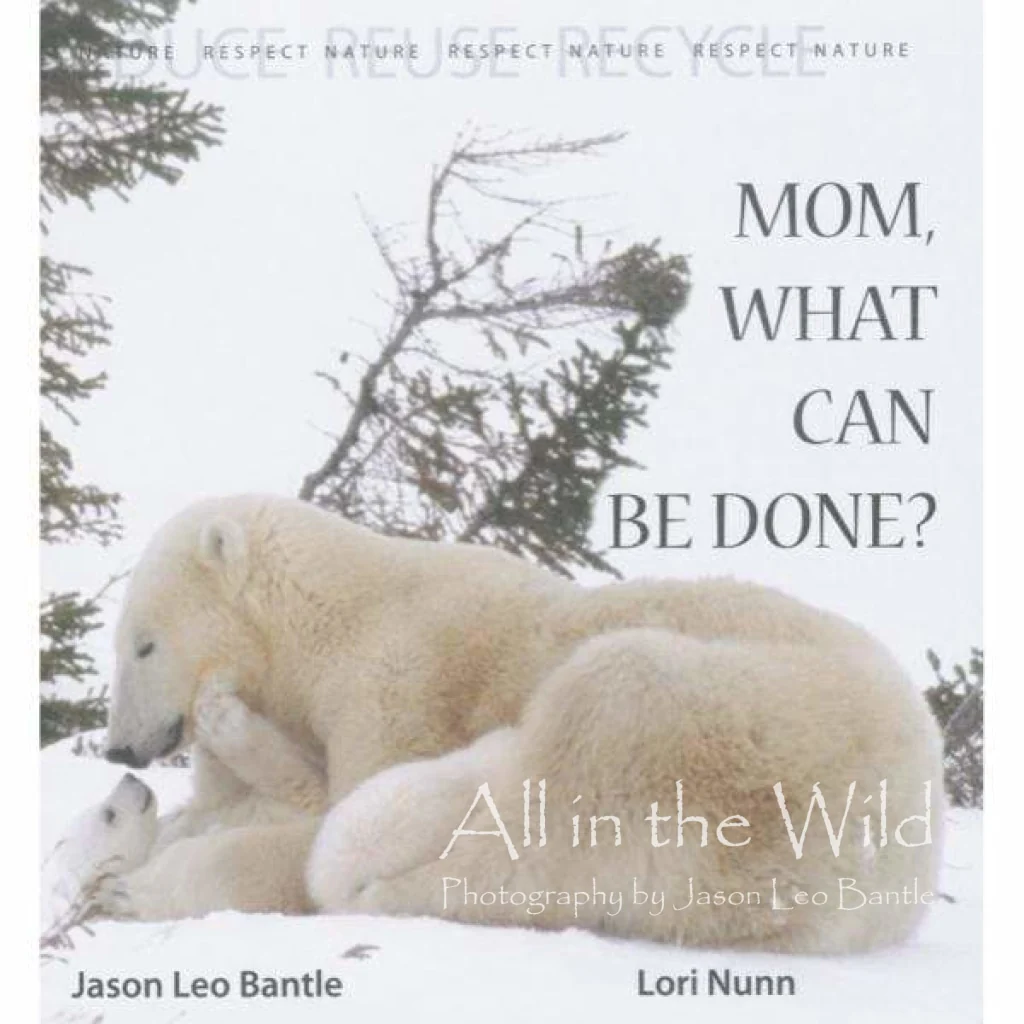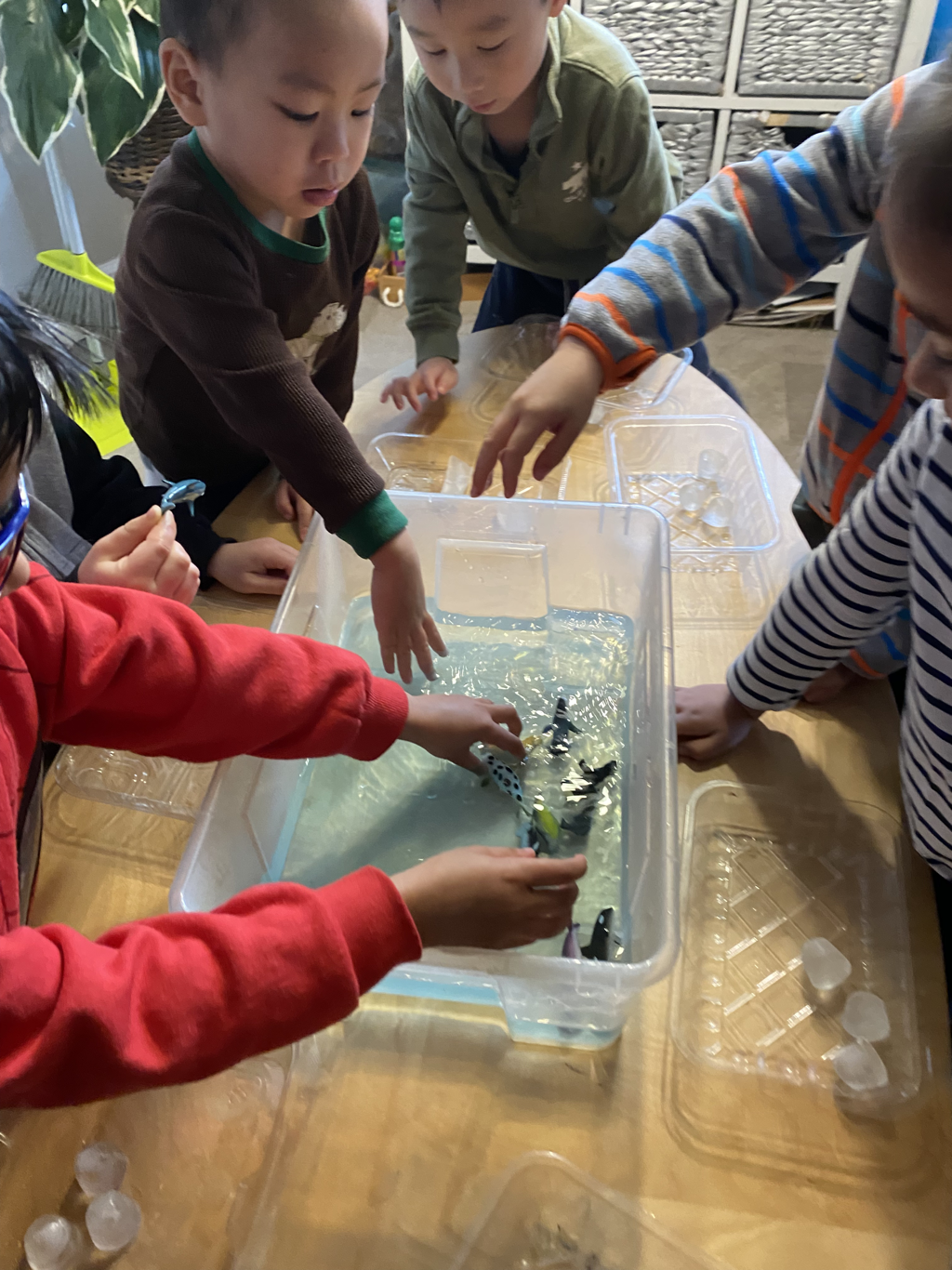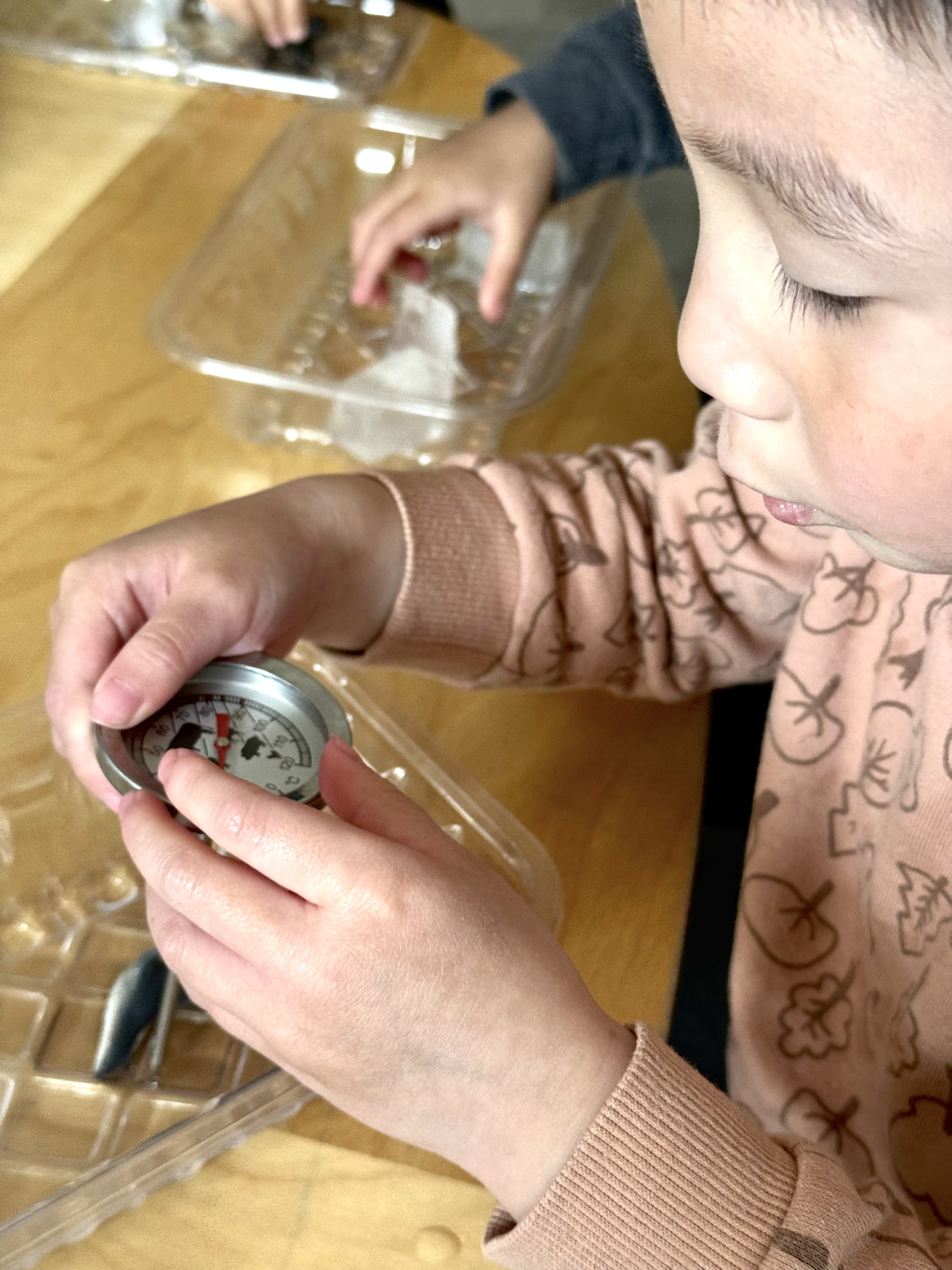|
Visiting the outdoors to embrace the blossoming cherry blossom in full bloom is such a delight! We have a blast going to a nearby park to play and take in the breath taking views. Soon the wind blows and our flower viewing has delicately been infused to be another experience. As cherry blossoms are both beautiful and fleeting (the blooms rarely last more than two weeks), they have come to represent the impermanence of beauty. Nora stretches her arm to delightfully touch the flurries of pink and white petals before they touch and carpet the ground. As the gentle wind blows stronger, walking the paths under a gently rain of petals, gives us a very different kind of experience. While attending to the signs of Spring. Emily chooses to come closer to notice and gently touch the daffodils. We learn so much by touching and feeling the natural world around us. It reminds us that the simple beauty of nature brings so much wonder and delight to us. When we reach back, we attempt to capture the beauty of the flowers with a technique wet-on-dry and wet-on-wet watercolor techniques. To cherish this moment of its liveliness. we paint light watercolor sunshine for our backgrounds. Nora experiences wet-on-dry technique which involves applying wet watercolor paint onto a dry surface. The surface can be a dry paper or a layer already dried paint. Wet on dry brings detail and drama to our watercolor work. With wet-on-wet. Fides uses his watercolor sponge brush to apply wet paint to an already wet surface. dispersing the pigment and getting less predictable results. This indeed differs from the fine-tuned control we get with wet on dry watercolor painting to achieve colorful and softer edges in our painting. We adore digging around in the garden and exploring - finding ants and worms and bugs. As part of respecting nature, we plan to make our simple bug house for backyard with re-purposed wooden planks. By learning this experience, we inculcate understanding how important bugs as part of our eco system. From providing shelter to pollinators like bees and bumble bees to beneficial insects that help create our compost. During our group discussion, we ask ourselves on this question, Why do we think bugs need a house? Vivaan responds with another question, What happens when there is a thunderstorm? Felix: Or heavy rain? Margo: And lightning! Working on this learning experience increases our awareness and empathy for the environment around us. We need to find something that we can use for the floor and walls of the hotel. With some arrangement we attempt to create the structure. Once we are satisfied with the layout, it is time to start hunting for resources for furnishing the hotel, such as twigs, pinecones, as well as leaves. We learn to solve problems as work together to design and build the hotel. Referring to our interest in respecting nature involves a story of the changing environment titled "Mom, What Can Be Done?". With stunning photographs of Northern animals. this book asks us to think on what can be done to stop the loss of habitat of our wildlife and shows that animals are worried about their changing climate. Many questions we pose to ourselves as to how we can think of this situation. For example, polar bears are considered to be vulnerable to extinction, largely due to the rapid decline of sea ice brought on by climate change. One study has suggested that most polar bears could disappear by 2100 if the world continues to rapidly warm. To understand the concept of melting ice, we indulge ourselves in observing changes of form due to temperature. Our first experiment we observe the change of ice in cold water. Our observation informs us that there is a slight of change when the temperature of the water remains. As the next step, we include adding room-temperature water subsequently into a pool of cold water to further observe the change of form, from ice to water. This time round the ice placed in the water melts faster. Fides immediately questions when he notices the rapid change, How does the ice melt so quickly? Inserting a thermometer into the mixture interests us to understand the concept with an aid of a measurement tool. Vivaan shares his measures by observing how the temperature rises, The temperatures increase from 30 to 40 degree. Kindest,
Children & Friends.
0 Comments
Leave a Reply. |
No part of this publication may be reproduced, distributed, or transmitted in any form or by any means, including photocopying, recording or any other electronic or mechanical methods, without the prior written permission of the publisher.
Archives
July 2024
|
